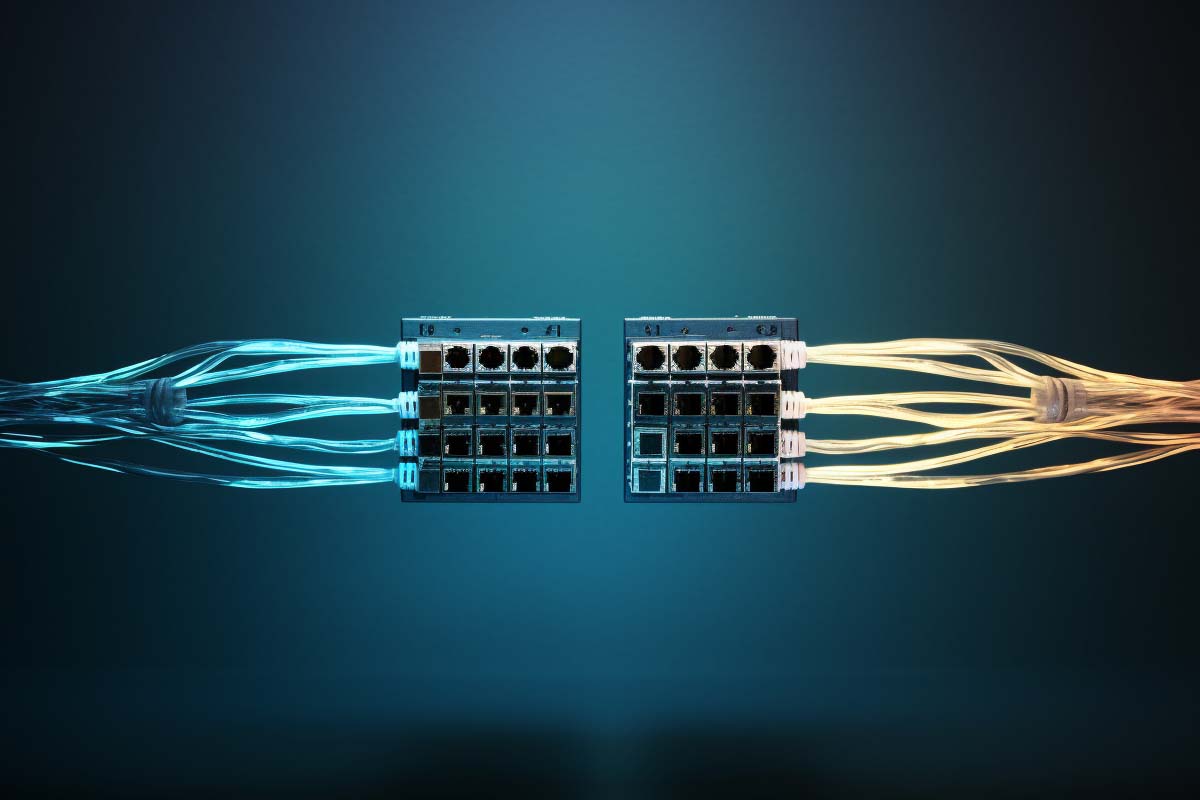What Is a Multisession CD?
A Multisession CD refers to a compact disc (CD) that allows data to be recorded in multiple sessions. Unlike a conventional CD where data is written in a single session,

Understanding the differences between half-duplex vs full-duplex communication is essential in the field of data transmission. This guide provides a detailed comparison, focusing on their advantages, disadvantages, and real-life applications.
Half-duplex communication refers to a transmission mode in networking where data flow occurs in only one direction at a time. In a half-duplex system, a device can either send or receive data, but not both simultaneously. When one device is transmitting, the other must wait until the transmission is complete before responding.

Targeting Cisco specific Networks, this Cisco Network Engineer Training series provides in-depth curriculum for those wanting to learn networking basics and advance his/her career opportunities as a Cisco Network Engineer.
Full-duplex communication allows for simultaneous two-way data transmission. In a full-duplex system, devices can send and receive data at the same time without needing to switch between these modes. This mode effectively doubles the potential bandwidth of a connection, as information can flow in both directions concurrently.
This comprehensive training series is designed to provide both new and experienced network administrators with a robust skillset enabling you to manager current and networks of the future.
| Feature | Half-Duplex | Full-Duplex |
|---|---|---|
| Data Transmission | One direction at a time | Simultaneous in both directions |
| Cost | Generally lower | Higher due to advanced technology |
| Use Cases | Suitable for simple, rugged environments | Ideal for complex, high-speed networks |
| Setup | Easier to set up and configure | Requires more sophisticated setup |
| Throughput | Limited due to one-way communication | Higher due to concurrent transmission |
| Latency | Higher due to switching between modes | Lower as simultaneous transmission reduces delay |
| Power Consumption | Typically lower | Higher, often requiring additional cooling |
| Compatibility | Less compatible with modern networks | Widely compatible with contemporary networks |
The choice between half-duplex and full-duplex depends on the specific needs of a network environment. Half-duplex is ideal for simpler, cost-effective applications, while full-duplex is necessary for modern, high-speed networks, despite its higher cost and complexity. This knowledge is crucial for network engineers and those pursuing certifications like Network+ and CCNA.
The primary difference lies in their mode of communication. Full duplex allows simultaneous two-way communication, meaning devices can send and receive data at the same time. In contrast, half duplex permits two-way communication but not simultaneously; a device must wait for the other to finish transmitting before it can respond.
Yes, many modern network devices, especially Ethernet switches and network interface cards (NICs), can switch between full duplex and half duplex modes. This is often managed automatically based on network conditions and the capabilities of connected devices.
Full duplex is preferred because it significantly enhances network efficiency and speed. By allowing simultaneous data transmission, full duplex reduces waiting times and effectively doubles the bandwidth capacity of a connection, making it ideal for high-speed, high-volume data transfer requirements of modern networks.
Yes, half duplex can be advantageous in scenarios where cost and simplicity are crucial, such as in rugged outdoor environments or in basic communication systems like walkie-talkies. It’s also useful in situations where signal interference or bandwidth limitations make full duplex operation challenging.
In full duplex mode, network performance is typically higher due to increased data transfer speeds and reduced transmission delays. In contrast, half duplex can lead to slower data rates and increased latency, as devices must alternately transmit and receive, which can result in a wait time for the availability of the communication channel.
Lorem ipsum dolor sit amet, consectetur adipiscing elit. Ut elit tellus, luctus nec ullamcorper mattis, pulvinar dapibus leo.
$49.99 Original price was: $49.99.$16.99Current price is: $16.99. / month with a 10-day free trial
A Multisession CD refers to a compact disc (CD) that allows data to be recorded in multiple sessions. Unlike a conventional CD where data is written in a single session,
A Data Dictionary is an essential tool in the field of data management and analytics, serving as a centralized repository of information about data, such as its meaning, relationships to
Turing Completeness is a term that originates from the field of computer science and pertains to the capabilities of computation systems. This concept is named after Alan Turing, a pioneer
Single Instruction, Multiple Data (SIMD) is a parallel computing architecture that allows a single processor to execute the same operation on multiple data points simultaneously. This approach is particularly effective
Virtual Private Cloud (VPC) is a secure, isolated private cloud hosted within a public cloud environment. This model enables users to run and manage their applications in a private, isolated
Terraform Cloud, developed by HashiCorp, is a cloud service designed to help teams use Terraform efficiently and collaboratively in a cloud environment. It enhances the functionality of Terraform, an open-source
Fuzzing as a Service (FaaS) is a cloud-based cybersecurity service that automates the process of fuzz testing or fuzzing, a software testing technique used to discover coding errors and security
A Graphical User Interface (GUI) Widget Toolkit is an essential collection of libraries and tools that developers use to create visually interactive interfaces for software applications. This toolkit provides a
A Python package is a way of organizing related modules into a directory hierarchy, providing a means to structure Python’s module namespace using “dotted module names”. Essentially, a package is
JUnit, a cornerstone in the Java programming ecosystem, is a framework used for writing and running repeatable automated tests. As software development practices have evolved, the necessity for efficient testing
Oracle Exadata is a comprehensive database solution engineered to deliver unprecedented performance, scalability, and reliability for running Oracle Database. This integrated system, designed by Oracle Corporation, is optimized to ensure
Definition of Gaussian Blur Gaussian Blur is a widely used effect in image processing that applies a Gaussian function to smooth or reduce detail and noise in images. Named after
ENDING THIS WEEKEND: Train for LIFE at our lowest price. Buy once and never have to pay for IT Training Again.